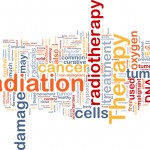
Osteoradionecrosis occurs in previously irradiated bone; it can be defined as an area of devitalized and exposed bone that fails to heal over a period of three to six months in the absence of local neoplastic disease. Clinical appearances vary from asymptomatic bony exposures in early stages to secondary infection, pain, fistulas and pathological fractures. A higher incidence of around 12% was reported before the late 1960s with recent studies suggested an incidence of about 3% although under-reporting may be an issue. While osteoradionecrosis (ORN) is an uncommon complication it has a significant impact on morbidity and quality of life.
The aim of this Cochrane review was to assess the effects of interventions for preventing osteoradionecrosis of the jaws in adult patients with head and neck cancer undergoing curative or adjuvant (i.e. non-palliative) radiotherapy.
Methods
Searches were conducted in the Cochrane Oral Health’s Trials Register, Cochrane Central Register of Controlled Trials (CENTRAL), Medline, Embase, Allied and Complementary Medicine (AMED), Scopus, Proquest Dissertations and Theses ,Web of Science Conference Proceedings, the US National Institutes of Health Trials Registry (ClinicalTrials.gov) and World Health Organization International Clinical Trials Registry Platform databases with no restrictions on language or publication status.
Randomised controlled trials (RCTs) or quasi-RCTs in head and neck cancer patients 18 years and older who had undergone curative or adjuvant radiotherapy to the head and neck and had who had received an intervention to prevent the onset of ORN were considered. Interventions were to be independent of their cancer therapy. Two reviewers independently selected studies extracted data and assessed risk of bias using the Cochrane domain-based tool. The authors of included studies were contracted for missing data and standard Cochrane methodological approaches followed.
Results
- 4 studies involving 342 adults were included.
- All 4 studies were considered to be at high risk of bias.
- 3 broad interventions were identified that may potentially reduce the risk of ORN development:
- 1 study (44 patients) showed no reduction in ORN when using platelet-rich plasma placed in the extraction sockets of prophylactically removed healthy mandibular molar teeth prior to radiotherapy (odds ratio (OR) = 3.32 (95%CI; 0.58 to 19.09), [very low-certainty evidence].
- 1 study (220 patients) compared fluoride gel and high-content fluoride toothpaste (1350 parts per million (ppm)) in prevention of post-radiation caries and found no difference between their use as no cases of ORN were reported [very low-certainty evidence].
- 2 studies involved the use of perioperative hyperbaric oxygen (HBO) therapy and antibiotics.
- 1 study (74 patients) showed that treatment with HBO caused a reduction in the development of ORN in comparison to patients treated with antibiotics following dental extractions (risk ratio (RR) = 0.18 (95%CI; 0.43 to 0.76), [very low-certainty evidence].
- 1 study (26 patients) found no difference between combined HBO and antibiotics compared to antibiotics alone prior to dental implant placement, RR = 3.00 (95%CI; 0.14 to 65.16), [very low-certainty evidence].
- Adverse effects of the different interventions were not reported clearly or were not important.
Conclusions
The authors concluded: –
Given the suboptimal reporting and inadequate sample sizes of the included studies, evidence regarding the interventions evaluated by the trials included in this review is uncertain. More well-designed RCTs with larger samples are required to make conclusive statements regarding the efficacy of these interventions.
Comments
This review looked for non-treatment dependent dental interventions that might reduce osteoradionecrosis (ORN) identifying a small number of interventions with uncertain evidence to support them. An extensive literature search was conducted but only a small number of RCTs involving a small number of patients were identified. Given that ORN is an uncommon complication more research is needed into effective interventions. However, as the authors highlight in their implication for research section a significant number of patients would need to be recruited to trials so large-scale multi-centre collaborations would be required.
Links
Primary Paper
El-Rabbany M, Duchnay M, Raziee HR, et al. Interventions for preventing osteoradionecrosis of the jaws in adults receiving head and neck radiotherapy. Cochrane Database Syst Rev. 2019;2019(11):10.1002/14651858.CD011559.pub2. Published 2019 Nov 20. doi:10.1002/14651858.CD011559.pub2
Other references
